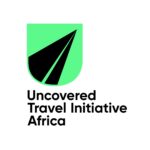On September 18, 2025, Uganda’s tourism stakeholders convened for the 3rd Annual Tourism Development Programme Review Conference in Kampala. The event brought together government officials, private sector leaders, development partners, and local authorities. All were united in their mission to reflect on progress, celebrate milestones, and chart solutions to persistent challenges in the tourism sector.
The gathering underscored how far Uganda tourism has come, while also spotlighting where the country must head. The review was not only a platform for reporting figures but also for dialogue, strategy, and renewed commitments.
Uganda Tourism Records 1.37 Million Arrivals
Opening the proceedings, Geoffrey Seremba, Under Secretary at the Ministry, presented a strong report. He revealed that Uganda welcomed 1.37 million international visitors in 2024, marking a 7.7% growth from the previous year. Tourism revenues reached USD 1.2 billion, contributing 5.7% to national GDP, and supporting over 833,000 direct jobs.
Seremba credited this progress to collaboration among government, private players, communities, and international partners. Yet, he acknowledged challenges including limited infrastructure, underdeveloped aerodromes, and persistent human–wildlife conflicts. He called for stronger global marketing, diversification of tourism products, conservation of heritage, and an embrace of digital transformation.
The Case for Domestic Tourism
Irene Birungi Mugisha, Coordinator of the CEO Presidential Forum, emphasized domestic tourism’s critical role in recovery. She highlighted that 2.8 million Ugandans visited national parks in the past year, showing that Ugandans are also fueling growth.
She spoke of the “5 A’s of Tourism”, attractions, activities, accommodation, accessibility, and amenities as cornerstones of sustainable development. Leadership, technology, and creative industries, she argued, must complement these fundamentals to ensure communities reap tangible benefits.
Branding Uganda as a Unique Destination
Daniel Irunga, Senior Marketing Officer at the Uganda Tourism Board (UTB), focused on sustainability and branding. He insisted that Uganda must stand out for its unique culture, heritage, cuisine, and natural beauty.
He outlined UTB’s seven strategic pillars, which include telling Uganda’s brand story, engaging youth, promoting adventure tourism, and positioning Uganda as a top three African MICE destination. Success, he noted, requires sustained funding, innovative marketing campaigns, and strong partnerships.
Local Governments at the Heart of Tourism Delivery
Richard Okuku, Chairperson of the Uganda Local Government Association, highlighted achievements such as the Moroto Cliff-yard project and new community engagement guidelines. He urged more decentralization, investment in roads, aerodromes, and digital infrastructure to close persistent gaps. Without such reforms, he warned, Uganda’s tourism growth would remain uneven.
Data Insights from the Programme Review

Dr. Ajer Basil, Programme Lead for the Tourism Development Programme, presented an evidence-based assessment. He noted that tourism’s GDP contribution grew from 6.9% in 2019 to 7.9% in 2025. Hotel occupancy averaged 53.2%, with over 350,000 rooms available.
Major events like Nyege Nyege Festival and the Pearl of Africa Tourism Expo boosted arrivals. Faith-based tourism also grew, with 15% of Namugongo Martyrs Day pilgrims coming from abroad. Yet, funding remained low, with only 19% of the planned UGX 5.9 trillion under NDP III secured.
Conservation, Communities, and Challenges 
Minister of Tourism, Wildlife and Antiquities, Hon. Tom Butime, reaffirmed the government’s commitment to conservation across 32 protected areas. He announced new investments in parks, monuments, and community colleges to improve visitor experiences.
Prime Minister Hon. Robinah Nabbanja, representing the President, launched the new Annual Tourism Development Programme. She assured stakeholders of strong political support, while acknowledging challenges in coordination and resource mobilization.
Other speakers, including Dr. Simon Nampindo of the Uganda Wildlife Conservation Society, highlighted conservation wins and challenges. Elephant and antelope populations are rising, but lion numbers, gorilla conservation, and habitat fragmentation remain serious concerns.
Uganda Tourism: Achievements and the Road Ahead
The conference concluded with a reminder that Uganda tourism is both an economic engine and a tool for cultural preservation and inclusive growth. Stakeholders celebrated steady growth in arrivals, revenues, and domestic tourism, but acknowledged the need to address infrastructure gaps, funding limitations, and conservation pressures.
What stood out most was the shared vision: that tourism is not only about visitors but about national transformation, community empowerment, and safeguarding Uganda’s natural and cultural heritage for generations to come.
By Nakasanje Jannat

